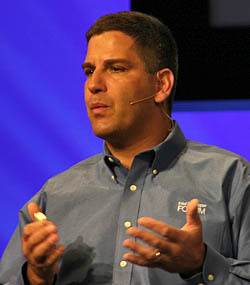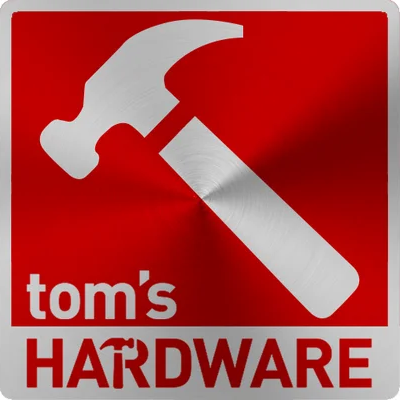Quo vadis, Viiv?
Santa Clara (CA) - Entertainment PCs have been available for some time, but don't penetrate the market as quickly as some would have hoped. AMD and Intel launched their entertainment platforms earlier this year to speed up the adoption of family room PCs - apparently with little impact so far. It's time for an update: We spent some time with Intel VP Don MacDonald to chat about the status of "Viiv."
If someone asked you to explain why a certain PC carries a "Viiv" sticker and what the benefits of that sticker are, what would you say? We'd bet that there are very few people out there who could come up with an answer right away and some details beyond the fact that Viiv refers to a certain kind of entertainment PC.
Viiv was launched during the Consumer Electronics Show in January of this year. At that time, the company claimed that more than 110 different Viiv PCs were available for purchase, for prices circling around the $1000 mark. Intel drives the marketing behind the Viiv brand, but Viiv PCs aren't PCs that are built by Intel: Viiv simply describes a package of specific processors, chipsets and network controllers as well as a software package that enables consumers to access (a so far very limited amount of) content that is reserved for Viiv computers.
If you are browsing through Best Buy and Circuit City flyers in your Sunday newspaper, you may have noticed that Viiv PCs aren't quite mainstream yet and appear to play in a niche market.
Being curious about the current situation of Viiv, we caught up with Don MacDonald at a recent visit to Intel's Santa Clara, Calif. headquarter. MacDonald is vice president and general manager of Intel's digital home group and leads the direction for Viiv. Given the fact that "Viiv" is a platform brand and describes a collection of certain Intel products, it is worth noting that MacDonald was also the key personality behind the marketing for "Centrino" - the brand for the firm's mobile platform technology package.
Just in case you are wondering, yes, we will be trying to provide an update on the competing AMD Live platform as well. Live PCs trail Viiv by almost half a year, which means that we will have to save an article about the platform's progress for later this year.
TG Daily: After listening to Paul Otellini's keynote at CES earlier this year, we were pretty sure that we will be seeing a flood of Viiv PCs. That has not happened yet. In fact, Viiv PCs appear to be hardly available in stores. Did you hit any speed bumps?
Get Tom's Hardware's best news and in-depth reviews, straight to your inbox.
MacDonald: I cannot provide any detailed numbers since we are in our quiet period, but I can say this: We measured and compared the first three months of sales for Viiv with Centrino, Pentium D and Pentium 4 and we shipped more Viiv units than units for any of these other products during their first three months, which pleasantly surprised me.
TG Daily: Still, the launch and availability of products appear to be much less than we expected.
MacDonald: The two biggest challenges for Viiv are technical and communication challenges. We have taken a patient approach that is very similar to Centrino. When we launched Centrino, less than 5% of the users people tookd advantage of wireless. We did not invent wireless and we were not first ones offering wireless. But we made wireless normal in notebooks. If you remember, we launched Centrino just after 9/11: There weren't any wireless customers and people weren't deploying hotspots - there was a chicken and egg problem. We broke that by being a catalyst for more than 300,000 hotspots.
Viiv is the same thing. It is about acquiring, managing and enjoying content online in addition to the normal way with a shiny disc or a satellite dish. But the studios have been very reluctant putting content online, especially HD content. Behind the scenes we show them what can be done. Our job for 2006 is to make the acquisition of content from the Internet normal. If you understand the usage model, you will appreciate what we have done in Viiv. But explaining what Viiv does for you is very difficult, if you don't care about that usage model. Job number one is not so much selling Viiv; it is creating the usage model. And that's an industry thing we are trying to get done.
Don MacDonald
TG Daily: How do you explain people the benefit of consuming online content? Isn't the Ipod today the only device that has success in convincing consumers to download online content?
MacDonald: It all starts with people and the usage model. If all you do is replacing a DVD player, you haven't solved any problems. You just replaced a $50 DVD player with a $600 or $700 Viiv PC. What really matters is that we have to get back to basics.
If you look at every industry change in the past 100 years, you start with a change in technology, a change in content, a change in distribution and a change in playback. I would argue that if you see a change in each of those four buckets, you are at the beginning of a new industry. Here's an example: Radio. The technology was analog modulation; the content originally was news broadcast and eventually became sports broadcast; the distribution was radio waves and the playback device was the radio. With digital entertainment, you have digital technology; content is everything that you can customize and personalize; the distribution works through the Internet and playback can happen through any device.
The fact that the Ipod is getting usage is secondary. What is really interesting is that you can put any content on any device. If people begin to acquire content from the Internet and move it around - whether onto an Ipod or through a network - that is what we have designed Viiv for. The usage model is coming, just like the first 1000, 10,000 and 300,000 hotspots. The device itself isn't a big deal. The big deal is the usage model.
Sales of the Ipod in the first year were 100,000 units. With Viiv, we don't have to be too patient. But we have to be realistic: We are dealing with four industries - networking, PC, content and communications. Besides that, the Viiv software is really difficult to deliver: We are dealing with multiple vendors and multiple countries.
Tom's Hardware is the leading destination for hardcore computer enthusiasts. We cover everything from processors to 3D printers, single-board computers, SSDs and high-end gaming rigs, empowering readers to make the most of the tech they love, keep up on the latest developments and buy the right gear. Our staff has more than 100 years of combined experience covering news, solving tech problems and reviewing components and systems.


